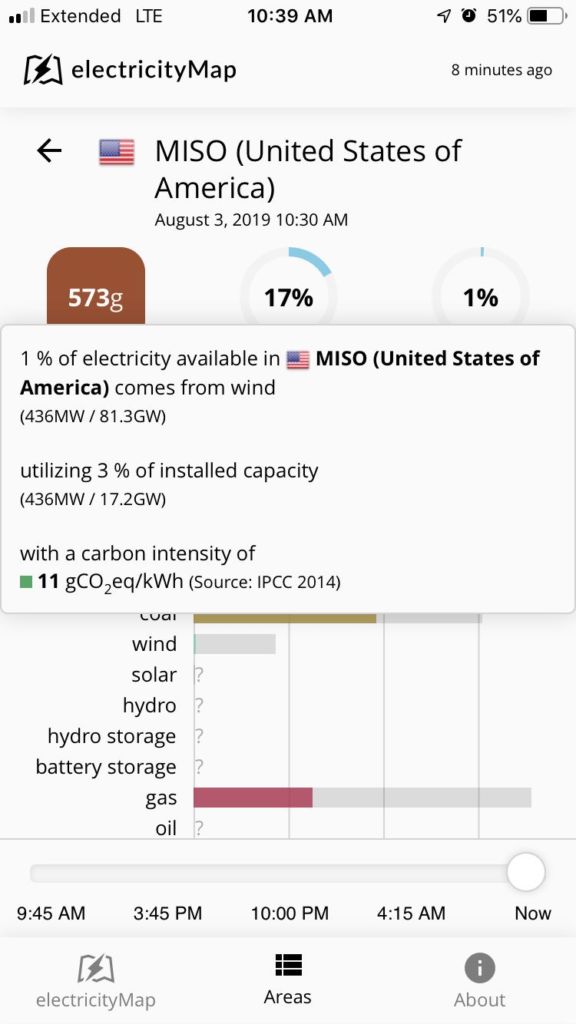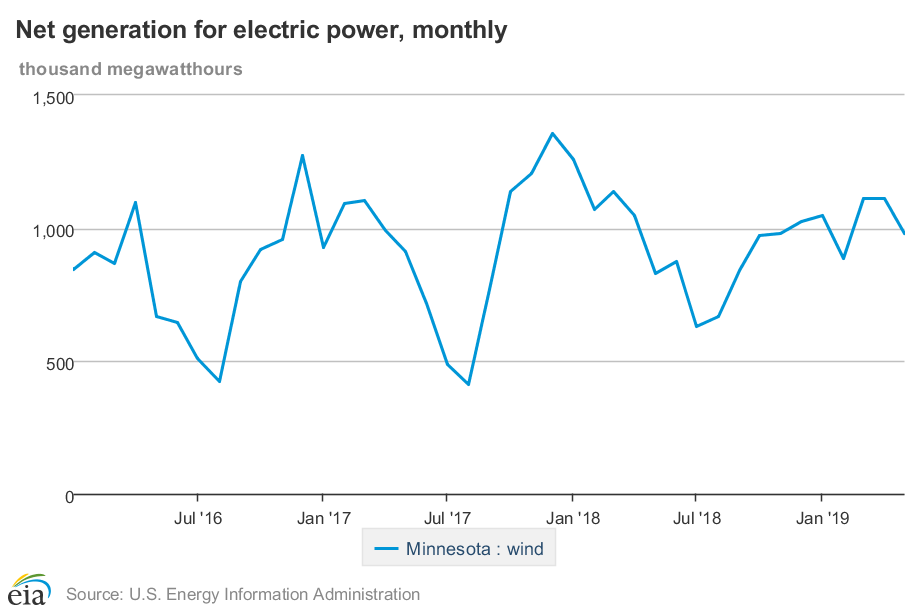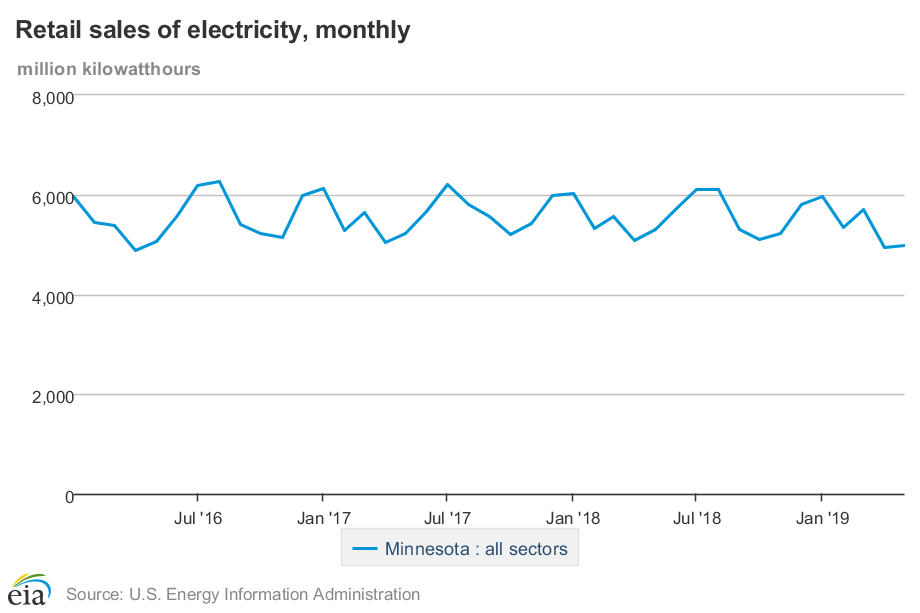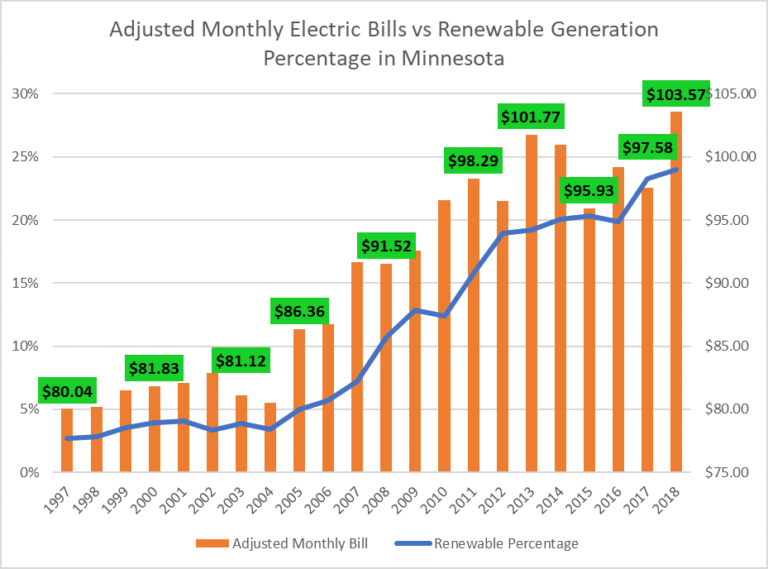Midwestern Wind Turbines Were 3 Percent Useful Last Weekend
I hope you all enjoyed your weekend.
No matter what you did, it was probably more productive than the wind turbines in the Midcontinent Independent Systems Operator (MISO) territory, where the wind utilized just 3 percent of installed capacity, providing a mere 1 percent of the electricity available on the grid.

But just because the wind wasn’t blowing doesn’t mean there was not a high demand for electricity. In fact, July and August are typically the months where electricity use in Minnesota is highest. Ironically, it is also when generation from wind is lowest.
The chart below shows Energy Information Administration data for wind generation in Minnesota from January of 2016 through May of 2019. You’ll see that wind generation plummets in July and August, when demand is high, and wind generates the most electricity in April and November, when the demand for electricity is lowest.


The fact that wind output is lowest in the summer, when electricity demand highest, is very problematic because it means Minnesota must have coal, nuclear, and natural gas power plants waiting to generate electricity when the wind isn’t blowing. This means we must pay twice for electricity even though we can only use it once.
This is exactly why we saw 2018 electricity bills reach a new all-time high.

Wind supporters claim that adding wind will increase the reliability of the grid, but this could only be true if we could control when the wind blows, which we can’t, or if the wind blew most when we needed the electricity, but this doesn’t happen either.
Last weekend shows that wind is not necessary to provide a reliable grid. In reality, wind is merely an expensive hood ornament plastered on to a grid powered by coal, nuclear, and natural gas.